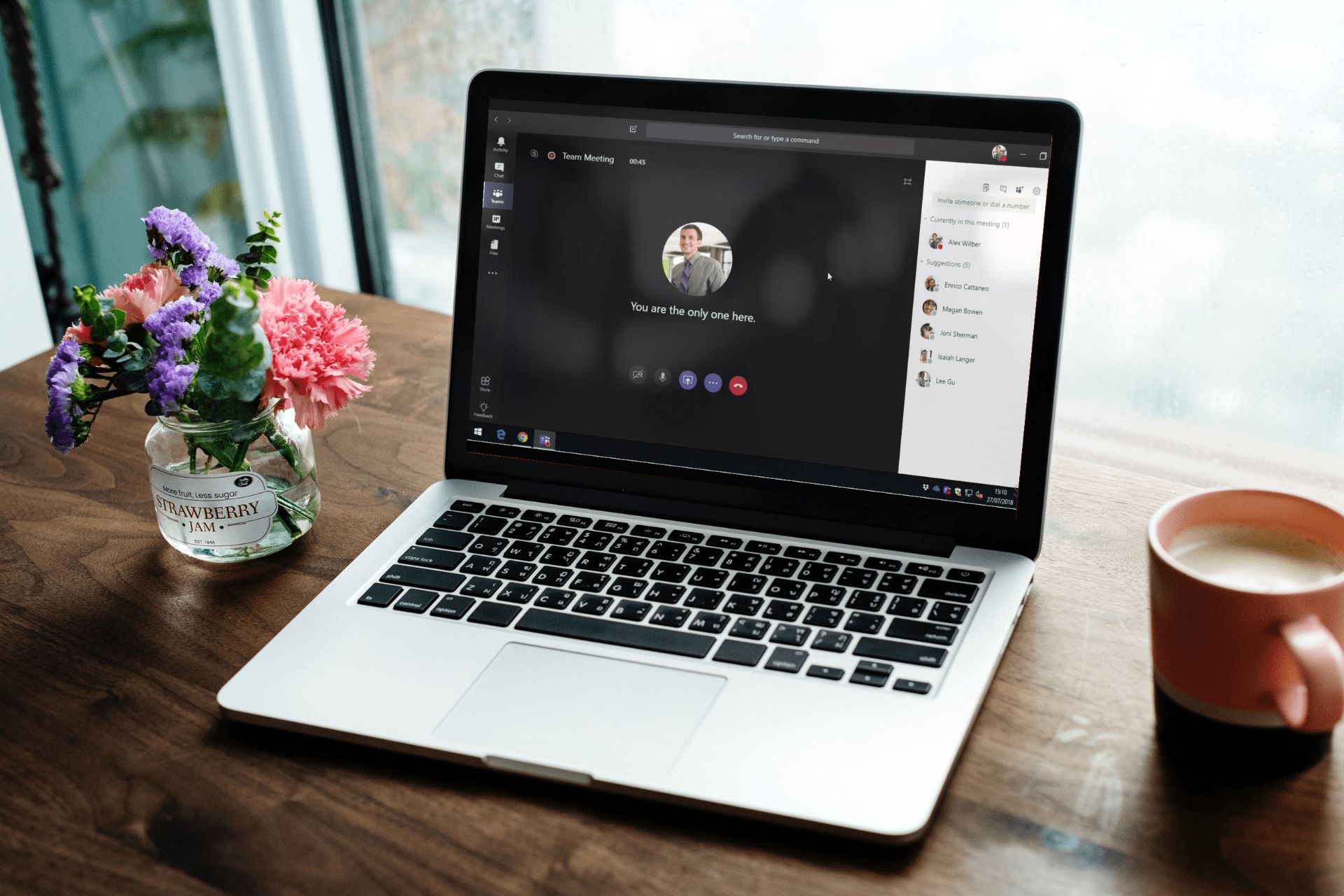Home>Production & Technology>Background Music>How Many Decibels Should Background Music Be


Background Music
How Many Decibels Should Background Music Be
Published: November 21, 2023
Optimize the sound of your space with the perfect background music volume. Discover the ideal decibel level for background music and create a harmonious ambiance.
(Many of the links in this article redirect to a specific reviewed product. Your purchase of these products through affiliate links helps to generate commission for AudioLover.com, at no extra cost. Learn more)
Table of Contents
- Introduction
- Importance of Background Music in Various Settings
- The Impact of Decibel Levels on Background Music
- Factors Influencing the Ideal Decibel Level for Background Music
- Recommended Decibel Levels for Different Environments
- How to Measure and Control Decibel Levels in Background Music
- Benefits of Maintaining Appropriate Decibel Levels in Background Music
- Potential Risks and Challenges of High or Low Decibel Levels in Background Music
- Tips for Selecting and Adjusting Background Music Decibel Levels
- Conclusion
Introduction
Background music has the power to transform any environment, creating the perfect atmosphere and enhancing the overall experience for customers, employees, or guests. Whether it’s in a retail store, restaurant, office, or even a fitness studio, carefully chosen background music can have a significant impact on people’s mood, behavior, and perception of the space.
However, when it comes to background music, it’s not just about the song selection or genre. The volume or decibel level at which the music is played plays a crucial role in creating the desired ambience. Finding the right balance and achieving the optimal decibel level is essential to ensure that the background music serves its purpose effectively.
In this article, we will explore the importance of background music in various settings and delve into the impact of decibel levels on the overall experience. We will also discuss the factors that influence the ideal decibel level for background music and provide recommendations for different environments. Additionally, we will explore how to measure and control decibel levels, the benefits of maintaining appropriate decibel levels, and the potential risks and challenges associated with high or low decibel levels in background music. Lastly, we will share some tips for selecting and adjusting background music decibel levels to optimize the listener’s experience.
So, whether you’re a business owner, a musician, or simply someone interested in understanding the intricacies of background music, this article aims to provide you with valuable insights to help you create the perfect auditory backdrop for any setting.
Importance of Background Music in Various Settings
Background music is not just an accessory; it serves a critical role in setting the mood and enhancing the overall experience in various settings. Let’s explore its importance in different environments:
- Retail Stores: Background music in retail stores can influence customer behavior and purchasing decisions. Upbeat and energetic music can create a lively atmosphere, increase customer engagement, and potentially boost sales. On the other hand, soothing and calming music can create a relaxed ambiance, encouraging customers to spend more time in the store.
- Restaurants: Background music plays a significant role in creating a pleasurable dining experience. Soft, melodic tunes can provide a relaxed atmosphere, while lively music can add energy to the restaurant environment. The right music can also influence the pace at which customers eat, potentially impacting table turnover and overall customer satisfaction.
- Offices: Incorporating background music in office spaces can improve productivity and boost employee morale. Well-chosen music can help mask background noise, increase focus, and create a positive work environment. However, it’s crucial to consider individual preferences and the potential distraction factor when selecting music for office spaces.
- Hotels and Hospitality: Background music in hotels and hospitality venues can create a welcoming and pleasant atmosphere for guests. Soft, soothing music in lobbies and common areas can help guests relax and feel at ease. In bars and lounges, the choice of music can set the mood and influence the overall ambiance of the venue.
- Fitness Studios: Background music in fitness studios has the power to motivate and energize participants during workouts. Upbeat, high-tempo music can enhance the overall exercise experience, increase endurance, and create a sense of enthusiasm. Fitness studios often curate playlists to match different workout intensities and create a motivational atmosphere.
These are just a few examples of how background music can significantly impact different settings. By understanding the specific needs and goals of each environment, you can tailor the selection and volume of background music to optimize the desired experience.
The Impact of Decibel Levels on Background Music
Decibel levels play a crucial role in the effectiveness and impact of background music in any setting. The volume at which music is played can evoke different emotions, stimulate desired behaviors, and shape the overall experience. Here are some key points to consider:
- Mood and Atmosphere: The volume of background music can heavily influence the mood and atmosphere of a space. Higher decibel levels can create a sense of energy and excitement, while lower decibel levels can offer a more relaxed and intimate ambiance. The chosen decibel level should align with the desired emotional response and atmosphere you want to create.
- Engagement and Attention: The right decibel level can enhance engagement and grab the attention of those in the environment. In a retail store, for example, slightly higher decibel levels can help attract shoppers’ attention and encourage them to explore the merchandise. However, it’s crucial to find the right balance to avoid overwhelming or distracting individuals.
- Communication: In certain settings, such as offices or restaurants, background music should not interfere with verbal communication. Care should be taken to ensure that the decibel level does not hinder conversation or make it difficult for employees or customers to hear each other. Striking the right balance between music volume and communication clarity is key.
- Comfort and Relaxation: Background music with lower decibel levels can create a more comfortable and relaxing experience. In spa settings or wellness centers, for instance, soft and soothing music at a low volume can promote relaxation and calmness. It’s important to consider the desired level of tranquility and adjust the volume accordingly.
- Customer Experience: The volume of background music directly impacts the overall customer experience. Excessively high decibel levels can lead to discomfort or irritation, driving customers away. Conversely, too low of a volume might fail to create the desired ambiance. Striking the right balance is essential to ensure a positive customer experience.
Understanding the impact of decibel levels in background music allows you to fine-tune the volume to align with the desired emotional response, engagement levels, communication needs, and overall comfort of the listeners. Finding the sweet spot will maximize the effectiveness and impact of background music in any given setting.
Factors Influencing the Ideal Decibel Level for Background Music
Choosing the ideal decibel level for background music is not a one-size-fits-all approach. It depends on various factors that influence the overall environment and the desired experience. Here are some key factors to consider:
- Type of Setting: Different settings have different requirements in terms of volume. For example, a busy retail store might require slightly higher decibel levels to attract and engage customers, while a serene spa might call for lower decibel levels to promote relaxation.
- Listener Preferences: Understanding the preferences and expectations of the listeners is crucial. For instance, in a restaurant, the decibel level should be set to a level that allows for comfortable conversation without overpowering the atmosphere. In fitness studios, the decibel level should align with the energy and motivation levels desired by the participants.
- Acoustic Properties: The acoustic properties of a space can affect the perception of volume. A larger, more open area might require slightly higher decibel levels to fill the space adequately. Conversely, a smaller, enclosed space might require lower decibel levels to prevent excessive reverberation.
- Noise Levels: Consider the existing ambient noise levels within the environment. In a noisy industrial setting, higher decibel levels might be necessary to overcome the background noise. On the other hand, in a peaceful library, lower decibel levels are critical to maintain a serene atmosphere.
- Time of Day: Depending on the time of day, the ideal decibel level may vary. During peak hours, higher decibel levels might be appropriate to match the increased activity and energy. During quieter periods, lower decibel levels can promote a more relaxed atmosphere.
These factors, among others, play a significant role in determining the ideal decibel level for background music. It is essential to consider the specific requirements of the setting, cater to the preferences of the listeners, and adapt to the unique acoustic characteristics of the environment to create the perfect auditory experience.
Recommended Decibel Levels for Different Environments
The ideal decibel level for background music varies depending on the environment and the intended experience. While personal preferences and specific settings may influence the final decision, here are some general guidelines for recommended decibel levels in different environments:
- Retail Stores: Background music in retail stores should be kept between 70-80 decibels. This level provides enough energy and engagement without overpowering the space or distracting customers.
- Restaurants: It is recommended to maintain a decibel level between 60-70. This range allows for comfortable conversation while still creating a pleasant ambiance.
- Office Spaces: Keeping the background music volume around 45-55 decibels is ideal for office environments. This range minimizes distractions while providing a pleasant working atmosphere.
- Hotels and Hospitality: Background music in hotels and hospitality venues should be set at a level of around 50-60 decibels. This volume ensures a pleasant backdrop without overpowering conversations or causing discomfort.
- Fitness Studios: The decibel level in fitness studios should be set between 80-90 decibels to match the energetic nature of workouts and motivate participants.
While these ranges provide general guidelines, it’s important to consider the specific needs and characteristics of each environment. It’s also advisable to periodically assess and adjust the decibel levels based on feedback and observations to ensure an optimal experience for the listeners.
How to Measure and Control Decibel Levels in Background Music
Accurately measuring and controlling decibel levels in background music is crucial to ensure a pleasant and appropriate auditory experience. Here are some methods for measuring and controlling decibel levels:
- Sound Level Meters: Use a sound level meter to measure the decibel levels in a given space. These devices provide real-time readings and can help you determine the current volume levels of the background music. Place the sound level meter strategically around the room to capture an accurate representation of the sound levels.
- Volume Controls: Utilize volume controls or audio systems with adjustable settings to control the decibel levels. This allows you to fine-tune the volume to the desired level for different times of the day, customer activity, or specific events. Make sure to have accessible and user-friendly controls to enable easy adjustments.
- Speaker Placement: The placement of speakers plays a significant role in controlling decibel levels. Position them strategically to evenly distribute the sound throughout the space. Avoid pointing speakers directly at areas where individuals may congregate or have conversations, as this can result in an imbalance in volume levels.
- Automatic Volume Limiters: Consider implementing automatic volume limiters or compressors to ensure that the decibel levels remain within the desired range. These devices automatically adjust the volume to prevent it from exceeding a predefined limit. This can be particularly useful in environments where multiple people have control over the volume settings.
- Regular Monitoring: Regularly monitor the decibel levels in the environment during different times and situations. Observe customer reactions, seek feedback, and address any concerns promptly. Monitoring allows you to identify potential issues and make necessary adjustments to maintain an optimal listening experience for everyone.
By employing these methods, you can effectively measure and control the decibel levels in background music. This enables you to create a comfortable, engaging, and enjoyable atmosphere while respecting the preferences and needs of the individuals in the space.
Benefits of Maintaining Appropriate Decibel Levels in Background Music
Maintaining appropriate decibel levels in background music offers various benefits to both businesses and individuals. Here are some key advantages:
- Enhanced Atmosphere: Appropriate decibel levels contribute to creating the desired atmosphere in any environment. Whether it’s a lively and energetic mood in a retail store or a peaceful and serene ambiance in a spa, the right volume ensures that the background music aligns with the intended experience.
- Improved Customer Experience: A comfortable and enjoyable listening experience positively impacts customers. When background music is at an appropriate volume, it enhances their overall satisfaction, keeps them engaged, and encourages them to stay longer, potentially leading to increased sales and customer loyalty.
- Increased Productivity: In office spaces, maintaining appropriate decibel levels promotes productivity. By reducing distractions and creating a pleasant working environment, employees can focus better on their tasks, leading to improved efficiency and performance.
- Positive Impact on Mood and Behavior: Background music at the right decibel level can have a positive impact on people’s mood and behavior. Upbeat music with appropriate volume levels can energize and motivate individuals, while softer music can promote relaxation and reduce stress levels.
- Customer Perception: The volume of background music can shape how customers perceive a brand or establishment. When the decibel levels are appropriate, it conveys professionalism, attentiveness, and a commitment to providing an enjoyable experience. This can result in a positive brand image and increased customer satisfaction.
- Health and Safety: Keeping background music at appropriate decibel levels also ensures the health and safety of individuals in the space. Excessively high volume levels can lead to hearing damage or discomfort, while extremely low volume levels may fail to create the intended atmosphere, possibly leading to customer dissatisfaction.
Maintaining appropriate decibel levels in background music benefits businesses and individuals by enhancing the atmosphere, improving the customer experience, boosting productivity, influencing mood and behavior, positively shaping customer perception, and safeguarding health and safety. Striking the right balance in volume encourages a harmonious and enjoyable environment for all.
Potential Risks and Challenges of High or Low Decibel Levels in Background Music
The volume of background music can have both positive and negative effects on the overall experience. Here are some potential risks and challenges associated with high or low decibel levels in background music:
-
Potential Risks of High Decibel Levels: Playing background music at excessively high volumes can pose several risks, including:
- Discomfort and Irritation: Loud music can cause discomfort to individuals, making it difficult for them to enjoy their time in the environment.
- Hearing Damage: Prolonged exposure to loud music can lead to hearing damage or loss, especially in settings where individuals are exposed to high decibel levels for extended periods.
- Communication Interference: High volume levels can make it challenging for people to have conversations, resulting in impaired communication and frustration.
- Customer Dissatisfaction: Customers may perceive excessively loud music as a negative experience, leading to dissatisfaction and a potential decrease in customer loyalty.
-
Potential Risks of Low Decibel Levels: Playing background music at very low volumes also presents challenges, including:
- Inaudibility: If the music is too soft, it may become indistinguishable and fail to create the desired atmosphere or evoke the intended emotional response.
- Poor Engagement: Low volume levels may result in a lack of engagement, leading to a bland and unstimulating environment that fails to capture customers’ attention or encourage them to stay longer.
- Uneven Sound Distribution: Insufficient volume can result in inadequate sound distribution, making it difficult for individuals located farther away from speakers to hear the music properly.
- Perception of Neglect: Customers or employees may interpret low volume levels as a lack of attention or care from the business, potentially impacting their overall perception of the experience.
Finding the right balance in decibel levels is crucial to mitigate the potential risks associated with background music. It’s important to ensure that the volume is neither too loud nor too soft, taking into consideration the comfort, communication clarity, engagement levels, and desired atmosphere for a positive and enjoyable experience.
Tips for Selecting and Adjusting Background Music Decibel Levels
Choosing and adjusting the decibel levels of background music requires careful consideration to optimize the experience for the intended audience. Here are some tips to help you in the process:
- Know Your Audience: Understand the preferences and expectations of your target audience. Consider their age group, cultural background, and the overall purpose of the environment. This knowledge will help guide your selection of music genres and volumes that resonate with your audience.
- Test and Gather Feedback: Conduct tests and gather feedback from customers or employees regarding the volume levels of the background music. This feedback can provide valuable insights into whether the current volume is suitable or needs adjustments.
- Acknowledge Environmental Factors: Recognize the environmental factors that may impact the perception of volume. Take into account the acoustics of the space, potential background noise, and the size of the area, as these factors can influence the decibel levels needed for an optimal listening experience.
- Regularly Assess the Atmosphere: Monitor the atmosphere and adjust the music volume accordingly. Keep track of peak hours, quieter periods, and specific events or activities that may require different volume levels to ensure an appropriate and engaging experience at all times.
- Consider the Purpose of the Space: Determine the desired atmosphere and purpose of the space. For example, in a lively restaurant, slightly higher decibel levels may be appropriate, while in a calm spa, lower volumes may be preferred. Aligning the volume levels with the purpose of the space enhances the overall experience.
- Utilize Technology and Controls: Take advantage of technology and audio control systems that allow you to adjust and fine-tune the volume levels. Consider using automatic volume limiters or compressors to prevent extreme variations in volume and maintain a consistent auditory experience.
- Train Staff: Educate and train your staff on the importance of maintaining appropriate decibel levels. Ensure that they understand how to adjust the volume controls and can respond to customer feedback or requests regarding the music volume.
By implementing these tips, you can select and adjust the decibel levels of background music effectively. Creating a pleasurable and engaging auditory experience contributes to overall customer satisfaction, enhances employee productivity, and helps to establish a positive brand image.
Conclusion
Choosing and maintaining the appropriate decibel levels in background music is essential for creating a captivating and enjoyable auditory experience in various settings. By understanding the impact of decibel levels on mood, behavior, and overall atmosphere, businesses and individuals can harness the power of background music to enhance customer satisfaction, boost employee productivity, and shape the perception of their brand.
Consideration should be given to factors such as the type of environment, listener preferences, acoustic properties of the space, noise levels, and time of day when determining the ideal decibel levels for background music. Striking the right balance ensures that the volume neither overwhelms nor fades into the background, but rather enriches the experience and achieves the desired effect.
Regular monitoring, testing, and gathering feedback from customers or employees help maintain optimal decibel levels. Adjustments should be made to accommodate peak hours, quieter periods, and specific events or activities to guarantee a consistently enjoyable atmosphere.
The benefits of maintaining appropriate decibel levels in background music are significant. They include enhanced atmosphere, improved customer experience, increased productivity, positive impact on mood and behavior, favorable customer perception, and the preservation of health and safety. On the other hand, the risks of high or low decibel levels encompass discomfort, hearing damage, communication interference, inaudibility, poor engagement, perception of neglect, and uneven sound distribution.
By following the tips for selecting and adjusting background music decibel levels, businesses can curate the perfect auditory backdrop for their environment. Careful consideration of the audience, environmental factors, and technology can help create a harmonious and engaging space that resonates with customers and employees alike.
Remember, background music should never be overlooked as a valuable tool in creating the desired ambience and overall experience. With the right decibel levels, businesses can elevate their brand, foster customer loyalty, and provide an enjoyable and memorable atmosphere for everyone who steps through their doors.











